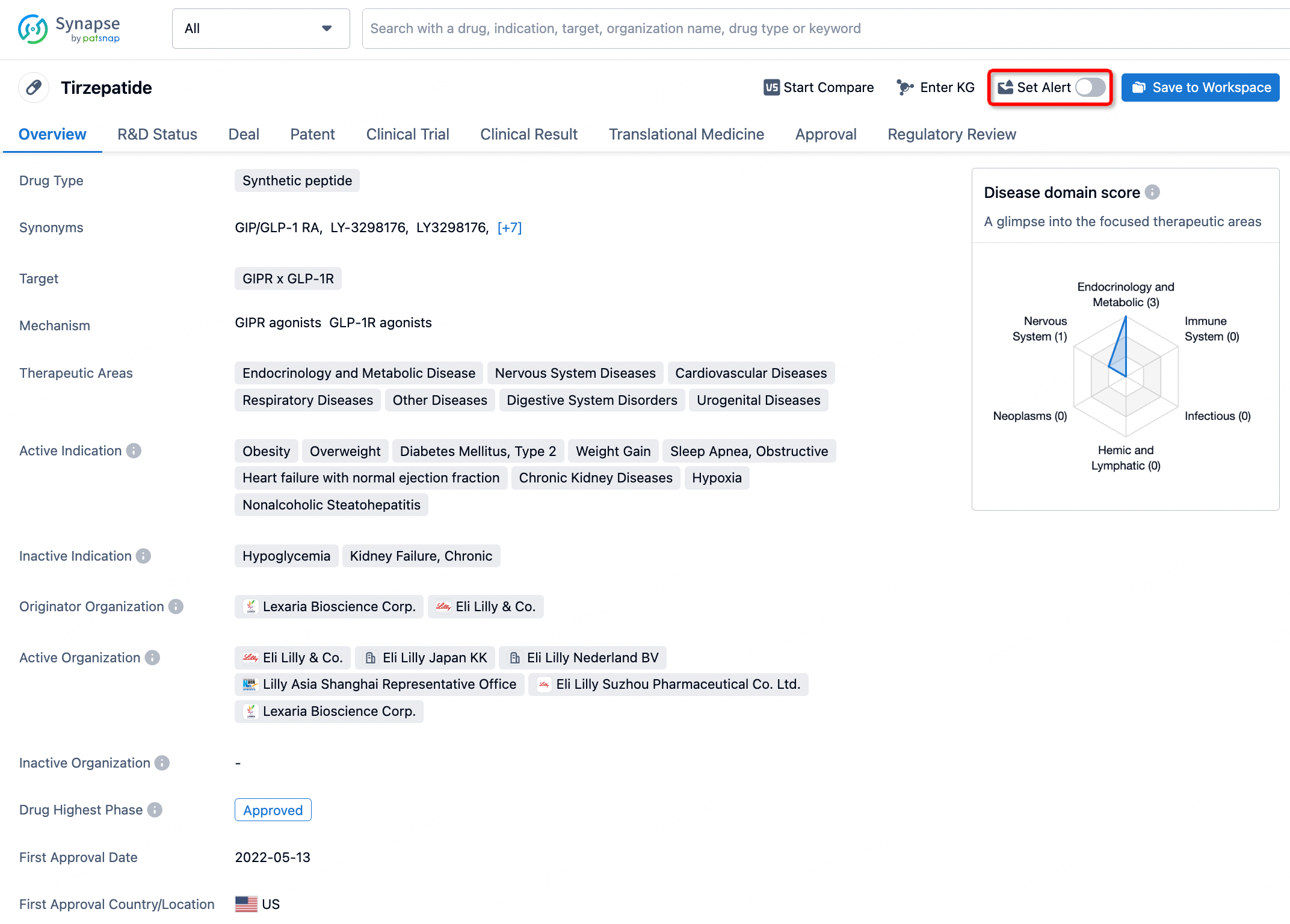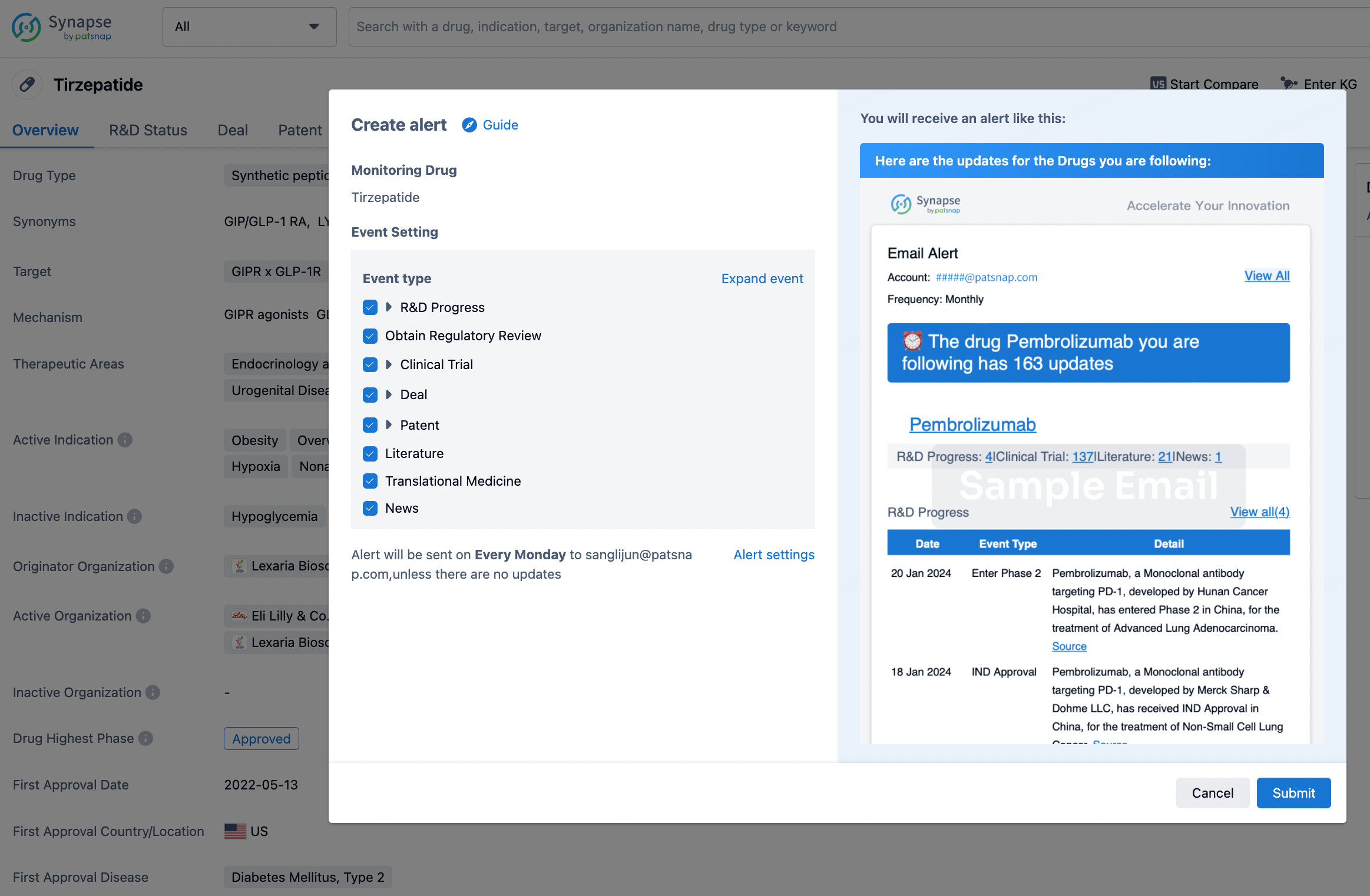Request Demo
What is Oxtriphylline used for?
15 June 2024
Oxtriphylline is a medication widely recognized under various trade names, such as Choledyl and Choledyl SA, primarily classified as a bronchodilator. This drug belongs to the xanthine derivative family and is used to help manage and treat respiratory conditions such as asthma, chronic bronchitis, and emphysema. It is known for its ability to relax and open air passages in the lungs, making it easier for individuals to breathe. Researchers and medical professionals have continually studied Oxtriphylline to better understand its efficacy, safety profile, and potential uses. Indications for Oxtriphylline include chronic obstructive pulmonary disease (COPD), bronchial asthma, and other conditions characterized by airway constriction.
One of the critical aspects of Oxtriphylline is its mechanism of action. Like other xanthine derivatives, Oxtriphylline works by inhibiting phosphodiesterase, an enzyme that breaks down cyclic AMP (cAMP) in the smooth muscle cells of the airways. By preventing the degradation of cAMP, Oxtriphylline leads to an increase in intracellular cAMP levels. This increase results in smooth muscle relaxation and bronchodilation, which helps alleviate the symptoms of conditions like asthma and COPD. Additionally, Oxtriphylline possesses anti-inflammatory properties and can enhance respiratory muscle function, contributing further to its therapeutic effects.
Oxtriphylline is administered orally, typically in tablet or liquid form. The dosage and frequency of administration depend on the patient's age, weight, medical condition, and response to treatment. For adults, the usual starting dose ranges from 400 mg to 600 mg per day, divided into multiple doses. For children, dosages are adjusted based on their body weight. It is essential to follow the prescribed dosage instructions carefully and not to exceed the recommended dose. The onset of action for Oxtriphylline can vary, but patients may start to experience relief from symptoms within 30 minutes to 2 hours after administration. For optimal results, Oxtriphylline should be taken consistently at the same times each day. Patients are advised to take the medication with food to minimize gastrointestinal discomfort.
Despite its benefits, Oxtriphylline is associated with several side effects. Common side effects include nausea, vomiting, diarrhea, headache, and stomach pain. Some patients may experience more severe side effects, such as rapid or irregular heartbeat, seizures, and severe allergic reactions. It is crucial to seek immediate medical attention if any of these severe side effects occur. Additionally, Oxtriphylline has several contraindications. It should not be used in individuals with a history of hypersensitivity to xanthine derivatives, active peptic ulcer disease, or seizure disorders. Caution is also advised when prescribing Oxtriphylline to patients with cardiovascular disease, hyperthyroidism, or liver dysfunction, as these conditions may exacerbate the drug's adverse effects.
Drug interactions are a vital consideration when prescribing and using Oxtriphylline. Several medications can affect the efficacy and safety of Oxtriphylline. For instance, drugs that induce hepatic enzymes, such as rifampin and phenobarbital, can decrease the plasma concentration of Oxtriphylline, reducing its therapeutic effects. Conversely, medications that inhibit hepatic enzymes, such as cimetidine and fluoroquinolone antibiotics, can increase Oxtriphylline levels, raising the risk of toxicity. Additionally, the concurrent use of other xanthine derivatives, like theophylline, can lead to additive toxic effects. It is essential to inform healthcare providers of all medications, supplements, and herbal products being taken to avoid potential interactions and ensure the safe use of Oxtriphylline.
One of the critical aspects of Oxtriphylline is its mechanism of action. Like other xanthine derivatives, Oxtriphylline works by inhibiting phosphodiesterase, an enzyme that breaks down cyclic AMP (cAMP) in the smooth muscle cells of the airways. By preventing the degradation of cAMP, Oxtriphylline leads to an increase in intracellular cAMP levels. This increase results in smooth muscle relaxation and bronchodilation, which helps alleviate the symptoms of conditions like asthma and COPD. Additionally, Oxtriphylline possesses anti-inflammatory properties and can enhance respiratory muscle function, contributing further to its therapeutic effects.
Oxtriphylline is administered orally, typically in tablet or liquid form. The dosage and frequency of administration depend on the patient's age, weight, medical condition, and response to treatment. For adults, the usual starting dose ranges from 400 mg to 600 mg per day, divided into multiple doses. For children, dosages are adjusted based on their body weight. It is essential to follow the prescribed dosage instructions carefully and not to exceed the recommended dose. The onset of action for Oxtriphylline can vary, but patients may start to experience relief from symptoms within 30 minutes to 2 hours after administration. For optimal results, Oxtriphylline should be taken consistently at the same times each day. Patients are advised to take the medication with food to minimize gastrointestinal discomfort.
Despite its benefits, Oxtriphylline is associated with several side effects. Common side effects include nausea, vomiting, diarrhea, headache, and stomach pain. Some patients may experience more severe side effects, such as rapid or irregular heartbeat, seizures, and severe allergic reactions. It is crucial to seek immediate medical attention if any of these severe side effects occur. Additionally, Oxtriphylline has several contraindications. It should not be used in individuals with a history of hypersensitivity to xanthine derivatives, active peptic ulcer disease, or seizure disorders. Caution is also advised when prescribing Oxtriphylline to patients with cardiovascular disease, hyperthyroidism, or liver dysfunction, as these conditions may exacerbate the drug's adverse effects.
Drug interactions are a vital consideration when prescribing and using Oxtriphylline. Several medications can affect the efficacy and safety of Oxtriphylline. For instance, drugs that induce hepatic enzymes, such as rifampin and phenobarbital, can decrease the plasma concentration of Oxtriphylline, reducing its therapeutic effects. Conversely, medications that inhibit hepatic enzymes, such as cimetidine and fluoroquinolone antibiotics, can increase Oxtriphylline levels, raising the risk of toxicity. Additionally, the concurrent use of other xanthine derivatives, like theophylline, can lead to additive toxic effects. It is essential to inform healthcare providers of all medications, supplements, and herbal products being taken to avoid potential interactions and ensure the safe use of Oxtriphylline.
How to obtain the latest development progress of all drugs?
In the Synapse database, you can stay updated on the latest research and development advances of all drugs. This service is accessible anytime and anywhere, with updates available daily or weekly. Use the "Set Alert" function to stay informed. Click on the image below to embark on a brand new journey of drug discovery!
AI Agents Built for Biopharma Breakthroughs
Accelerate discovery. Empower decisions. Transform outcomes.
Get started for free today!
Accelerate Strategic R&D decision making with Synapse, PatSnap’s AI-powered Connected Innovation Intelligence Platform Built for Life Sciences Professionals.
Start your data trial now!
Synapse data is also accessible to external entities via APIs or data packages. Empower better decisions with the latest in pharmaceutical intelligence.


